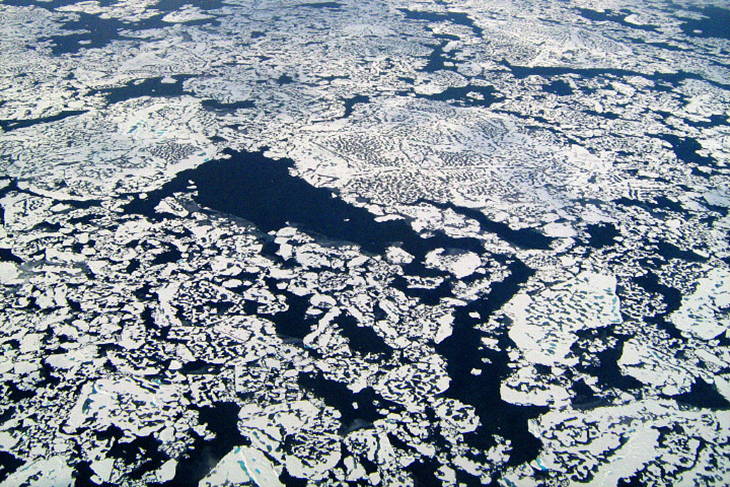
A team of scientists have gathered evidence that large amounts of ancient frozen methane deposits and other gases have been trapped in ice in the Arctic Ocean, and are being released into the atmosphere. They have also been dubbed as the “sleeping giant” as these gases are considered dangerous to all of the quickly escalating global climate issues.
The international team of scientists aboard the Russian ship saw bubbles of gas at the surface of the ocean. The discovery was made over a 580-square mile portion of the Laptev Sea, which is over 370 miles from the shore. These methane deposits and other types of gas – known as hydrates – are worse than carbon dioxide, with a ‘warming effect that is 80 times greater than carbon dioxide over 20 years.’
The International Siberian Study (ISSS-2020) shared that the methane levels found on the ocean’s surface are four to eight times higher than normal at the moment. And there is even more frozen methane hydrates within the other slope sediments that extend across the continental shelf.
These deposits are said to be the “sleeping giants of the carbon cycle” precisely because when these greenhouse gasses are released, they can accelerate climate change due to their warming effects. In fact, many believe that it’s the release of methane gas into the air that’s the major contributor to global warming.
Leader of the ISSS-2020 expedition and Stockholm University Professor, Örjan Gustafsson, said in a statement, “Climate warming is awakening the ‘sleeping giants’ of the carbon cycle, namely permafrost and methane hydrates.”
“How much this will lead to added emissions of the strong greenhouse gas methane is poorly understood. This is one of the grand challenges in current climate change research and a central goal of the expedition to address,” he added.
Diverse samples/data secured. Two key findings: bubbles+methane released from slope (hydrates?) and shelf sunk-in craters. #scienceresearch #scienceoutreach #science #instaresearch #oceanography #climatechange #climate #greenhousegasses #explore #arctic #permafrost pic.twitter.com/Do99dylVDZ
— International Siberian Shelf Study Expedition 2020 (@ISSSarctic2020) October 22, 2020
With this recent discovery, scientists and researchers are concerned that a new climate feedback loop has just begun.
As explained in the ISSS-2020, “One of the greatest uncertainties surrounding climate warming [concerns] the emission of naturally occurring greenhouse gases, such as methane, carbon dioxide, and nitrous oxide (N2O) from Artic thawing permafrost, and collapsing methane hydrates – crystals made of methane gas molecules ‘caged’ between solid water molecules – in the seabed north of Siberia will increase in the future.”
Chief scientist on the expedition, Professor Igor Semiletov of the Russian Academy of Sciences, also shared that the methane discharges are “significantly larger” in comparison to any others seen before. The lead researcher of the ISSS-2020 team explained that their findings are still early in nature, and that the actual amount of gas released still needs to be further analyzed.
Prof. Semiletov iterated, “The discovery of actively releasing shelf slope hydrates is very important and unknown until now. This is a new page. Potentially they can have serious climate consequences, but we need more study before we can confirm that.”
While the actual impact of this recently released gas on the climate still won’t be felt in the near future, eventually these large amounts of methane could truly advance the effects of climate change and global warming.
As explained by Prof. Gustasfsson, “At this moment, there is unlikely to be any major impact on global warming, but the point is that this process has now been triggered. This East Siberian slope methane hydrate system has been perturbed and the process with be ongoing.”
What are your thoughts? Please comment below and share this news!
True Activist / Report a typo


